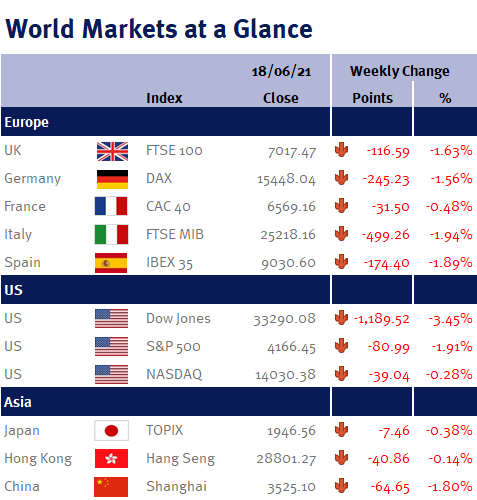The world’s most important central bank, the Fed, has been this week’s main focus as policymakers met to decide US monetary policy.
The accompanying statement was much more hawkish than we expected, especially the shift in the Fed’s ‘dot plot’ (which shows each policymaker’s interest rate forecast for each of the next three years).
In fact, the dot plot was a complete bolt from the blue: the median projection is now for two interest rate increases in 2023, up from none just three months ago – and two policymakers see six increases!
This big jump in the dot plot doesn’t make any sense to us as it doesn’t match the very small changes they made to their inflation forecasts: 2022 inflation expectations are now 2.1% versus the 2.0% they forecasted in March; while 2023 forecasts remained at 2.1%.
Moreover, the dot plot and inflation forecasts are now completely inconsistent with the Fed’s targets: at the end of last year, the Fed changed its inflation target from 2% to one that averages 2%. This change was designed to allow inflation to overshoot 2%, to enable it to make up for the time it has spent running below 2% – unless, of course, policymakers consider the current small inflation overshoot as sufficient to make up for the fact that inflation has averaged just 1.5% since the 2008/9 global financial crisis.
Furthermore, given that the Fed has stated that it would taper its QE program (bond purchases) well before it increases interest rates, this dot plot would suggest that their “we aren’t thinking about thinking about tapering” can no longer be the case: given the timelines, they must be discussing tapering.
Mitigating this shocker, as we explained in our last Market Update (please see here), the dot plot is just a forecast and not a commitment (and historically the dot plot’s track record at forecasting interest rates is poor, as policymakers have tended to be overly hawkish). Additionally, a couple of the more hawkish policymakers won’t be voting members by 2023.


